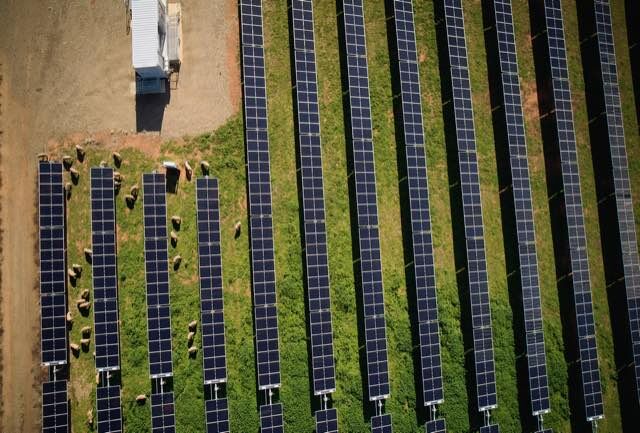Australia’s distributed electricity networks say they have become the forgotten part of the planning for Australian’s green energy transition, and insist that they can host vast amounts of wind, solar and storage capacity at a fraction of the cost of the planned focus on new transmission lines.
The question about new poles and wires is a live issue in the Australian energy debate, serving as a lightning rod for community pushback, and a centrepiece of the Coalition’s push for more gas and nuclear. And the blowout in costs for some projects is raising questions about their benefits.
Marc England, the CEO of NSW-based Ausgrid, says distributed networks like his have become the “missing middle” of the green energy transition – so much so that he and his peers are putting together their own “distributed ISP” to put their case to grid planners and policy makers.
Like Essential Energy’s John Cleland, England says that the opportunities within distributed networks have long been ignored, but the case for using them is even more compelling now that the costs of new high voltage transmission lines favoured in the market operator’s Integrated System Plan have soared.
“The paradigm was let’s do everything in the high voltage network,” England says in the latest episode of Renew Economy’s Energy Insiders podcast.
“But where there are alternatives, we need to talk about them.” And he cites the newly created Hunter Central Coast renewable energy zone which, unlike others, is not relying on vast amount of new transmission lines.
England says that Ausgrid told NSW government agencies and grid planners that it could host up to six gigawatts of new wind and solar capacity in that region, but in the end only got approval for 1 GW, which it is servicing largely through existing lines.
“If we can do six gigawatts, or anywhere near that, of new renewables at a third of the cost of what was originally envisaged, we should do it,” England says. “I think transmission networks are currently running about four times more expensive than were originally envisaged.”
England says the renewable energy zones in NSW were originally identified as having the best wind or solar resources, not because of the cost of transmission into the demand centres.
“So the Hunter Valley is interesting because the wind resource is not as good I understand, as, say, New England, or Central West Orana, but it’s hell of a lot cheaper to get the power to demand,” he says.
Issues with the REZs are bedevilling the renewables industry, with project delays and increased costs. Grid access has become a significant issue, with more than 20 GW of new capacity competing for limited spots (just 4 GW) in the new south-west REZ.
The results of a tender for this access has still not been released, developers are frustrated, and many are looking for alternative sites elsewhere in the grid, outside of the constrictions of the REZs.
So Ausgrid and its NSW peers Endeavour Energy and Essential Energy are putting together their own “distributed ISP”, which they intend to put to the Australian Energy Market Operator for consideration in the next iteration of national ISP due to be released later this year.
“It will be September, October,” England says. “So we’ll make it public, so we can make sure that the opportunities we were talking about are really thought through.
“If you look at the ISP and some of the narrative out there, everyone’s talking about, how do you replace large coal fired power stations with large assets, and then the customer will do the rest behind the meter with consumer energy resources.
“And there’s this huge opportunity sitting in the middle of all that, called distribution networks, with capacity, with land, with capabilities to actually do a lot of that at a much lower cost.
” And we should talk about that. And if we could do a lot of that at a much lower cost for customers, then we believe this could be a more productive transition.”
To hear the interview with Marc England, and his comments about community batteries, household tariffs, EV charging and the shift to electric homes, please go to the latest episode of the Energy Insiders podcast here.



